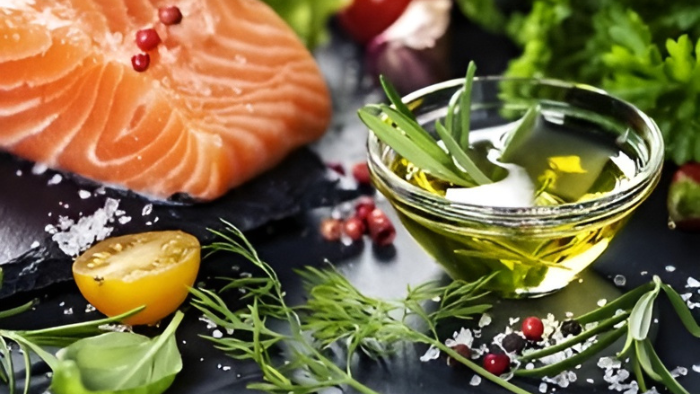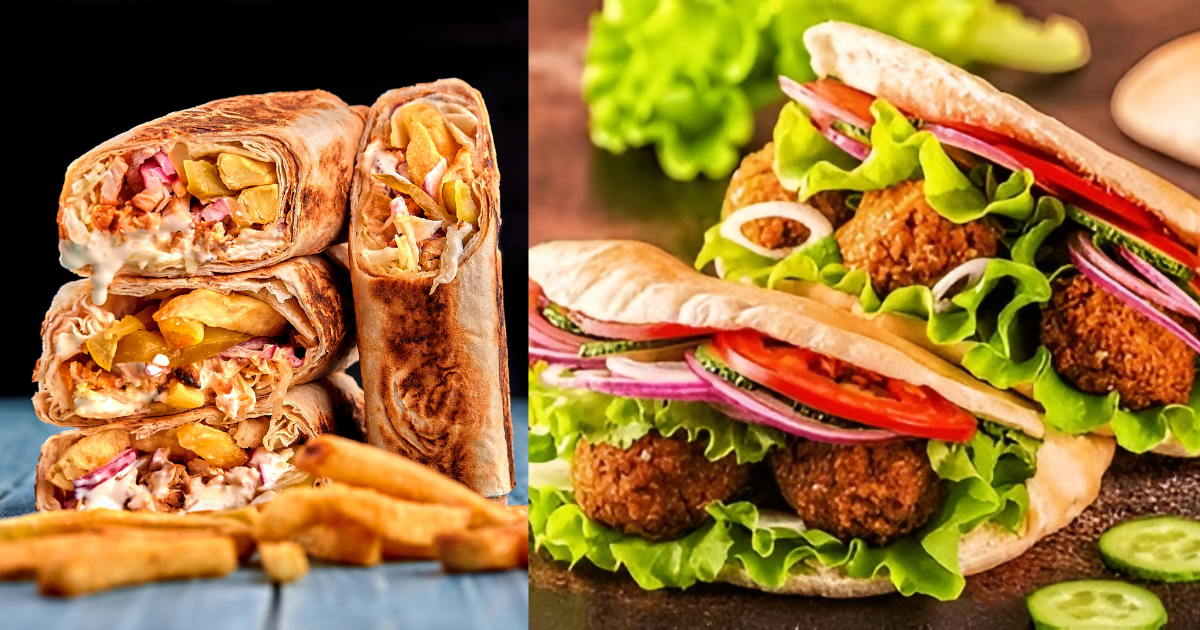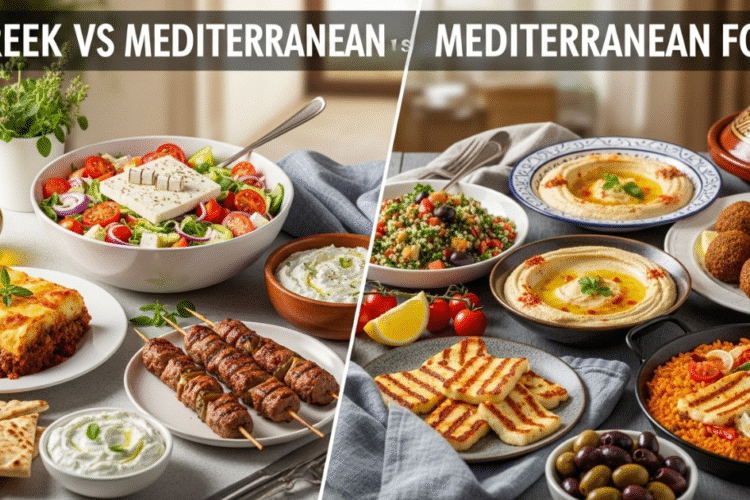Due to their close geographic proximity, the Mediterranean and Middle Eastern regions have developed culinary similarities over the ages. In addition to having different flavors, cooking methods, cultural influences, and less red meat than many other cultures, these diets place a strong emphasis on fruits, vegetables, whole grains, and healthy fats from nuts, seeds, and olive oils.
Although they are frequently misunderstood & used interchangeably, the short answer is no, these two are not the same and differ in many ways.
Difference Between Mediterranean and Middle Eastern Food
Countries that border the Mediterranean Sea, such as Greece, Italy, Morocco, and Libya, are most frequently linked to Mediterranean cuisine. Middle Eastern food takes into account West Asian nations such as Kuwait, Yemen, Iraq, and the United Arab Emirates. Some nations can be included in either area since they straddle the border between them, such as Israel, Turkey, and Lebanon.
Related Blog: What Defines Mediterranean Cuisine? History & Origins
Middle Eastern Food: Adventure Through Various Countries
All cultures and customs that exist in this area are magnificently reflected in Middle Eastern food. It includes nations like Lebanon, Jordan, Turkey, and Iran, and it has certain notable traits in common that distinguish it from Mediterranean cuisine.
Flavors and Spices
The strong and fragrant spices used in Middle Eastern cooking are well known. Many Middle Eastern cuisines use prominent flavors like cardamom, cumin, coriander, and sumac. Warm, nuanced, and frequently slightly sweet, these spices produce a symphony of flavor.
Ingredients
The Middle Eastern diet primarily consists of beef, poultry, lamb, and hearty grains like bulgur and rice. The meat is frequently slow-cooked until it is perfectly soft after being seasoned with a variety of spices.
Flatbreads and Wraps
Middle Eastern cuisine is known for its fondness for wraps and flatbreads. Naan, pita, and lavash are consumed in large quantities. These bread types are frequently used as carriers for tasty contents, such as fresh vegetables or grilled meats, rather than merely as a complement.
Mediterranean Food: A Seaside Adventure
The breathtaking beaches of nations like Italy, Greece, Spain, and southern France, on the other hand, are the source of Mediterranean cuisine. It is well-known for its health advantages, simplicity, and use of fresh ingredients.
Ingredients
The utilization of seasonal, fresh ingredients is essential to Mediterranean cooking. A major factor in the Mediterranean diet’s well-known health advantages is its emphasis on fresh foods, variety of veggies, fresh herbs, and olive oil. The natural essence of the ingredients may be seen via the lighter and brighter flavors.
Mediterranean Flavors
This idea is best illustrated by foods like caprese, bruschetta, and Greek salad. Imagine a ton of lush greens, tart feta cheese, crisp bell peppers, and juicy tomatoes. The foundation is olive oil, which gives a variety of foods a rich foundation.
Seafood Haven
Because the Mediterranean Sea is so close by, seafood is an essential component of Mediterranean cooking. On menus, grilled octopus, calamari, and other fish are common. Distinguishing the dishes from Middle Eastern cuisine, the sea adds a distinct and pleasant flavor.
Similarities In Middle Eastern and Mediterranean Food

Many people often confuse Mediterranean food with Middle Eastern cuisine because of their strong similarities. Some of the key reasons include:
1. Use of Olive Oil
Olive oil is an essential ingredient in Mediterranean cooking, as you are undoubtedly aware. However, olive oil is also used in Middle Eastern cooking. Vitamin E, antioxidants, and healthy fats are all abundant in olive oil. The oil has been sold to its neighboring regions for ages and is widely farmed in the Mediterranean region. One significant commonality between these two food categories is this.
2. Use of Vegetables
Both of these individuals enjoy eating vegetables. These include tomatoes, cabbage, spinach, cucumbers, artichokes, okra, eggplant, potatoes, zucchini, garlic, and onions. Regional variations in food preparation are a clear indication of cultural diversity. Whereas the Middle East sautes or steams its tomatoes, the Mediterranean region purees them.
3. Love for Seafood
Sometimes people are surprised to learn that both regions are more interested in seafood. Among them are fish, typically tuna and salmon. Mediterranean cuisine typically features beef, hog, and various variations, while Middle Eastern cuisine may have lamb, chicken, mutton, and other meats. Their passion for fish hasn’t changed, though.
4. Spice Palette
The most pertinent explanation for why Middle Eastern cuisine is categorized as Mediterranean must be found in its typical usage of spices. A dish is defined by the spices and their various combinations.
These two cuisines tend to be quite similar because they both use spices like thyme, rosemary, basil, oregano, parsley, mint, garlic, fennel, saffron, tarragon, etc. Additionally, when these spices are sautéed in olive oil, distinct flavors that occasionally seem similar are brought out.
5. Vegan Food
The availability of vegan foods is one feature of these cuisines. Not all Mediterranean dishes require cheese or dairy, despite what many people think. Similarly, there is no similar compulsion for Middle Eastern cuisine either. A lot of Mediterranean and Middle Eastern cuisine is vegan. Falafel, tabbouleh, dolma, and other vegan Middle Eastern foods are well-liked.
Vegetables, fish, portion control, and exercising after meals are other key components of Mediterranean cuisine. Both of these diets are really beneficial. The slenderness of Middle Easterners and Europeans is a clear indication of this.
6. Hummus
Chickpeas are finely mashed and spiced to make hummus, a dip. A popular food all throughout the world is hummus. Furthermore, it is a component of the recipes for both Mediterranean and Middle Eastern cuisine.
Conclusion
While Mediterranean and Middle Eastern cuisines share many similarities, like olive oil, fresh vegetables, spices, and even dishes such as hummus, they are not the same. Each has its own cultural roots, cooking styles, and signature flavors. Together, they offer a rich variety of healthy, flavorful, and diverse dishes that continue to delight people worldwide.
Related FAQs
1. Why is Middle Eastern food called Mediterranean?
Middle Eastern food is sometimes called Mediterranean because both cuisines use olive oil, vegetables, spices, and dishes like hummus. However, they differ in cultural roots, cooking styles, and signature flavors, and are not the same.
2. Why is Mediterranean food so similar to Middle Eastern food?
Mediterranean and Middle Eastern foods are similar because the regions are geographically close and have influenced each other for centuries. Both cuisines emphasize fresh vegetables, olive oil, whole grains, and healthy fats, but they differ in flavors, cooking styles, and cultural traditions.
3. What are Mediterranean flavors?
Mediterranean flavors are best shown in dishes like caprese, bruschetta, and Greek salad, featuring fresh vegetables, feta cheese, and olive oil as the base.
4. What are the flavors of the Middle East?
Middle Eastern food is known for its bold and aromatic spices, including cardamom, cumin, coriander, and sumac. These flavors create warm, rich, and often slightly sweet dishes that define the region’s cuisine.



